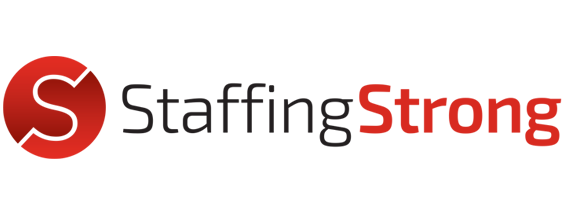
10 Mar What the Sansdemic is and How Employers Can Remain Competitive Amidst Growing Labor Shortages
As we gradually move on from the first major global pandemic in modern history, American employers are on the edge of the next major disruption—the sansdemic. That’s the lack of available talent that is alarmingly projected to become a growing scarcity over our lifetimes—and the coming decades—with generational patterns and a major dip in child birthing rates. The Great Resignation is a topic we’re covering at Staffing Strong a lot, and that’s because now is the time for hiring managers to get ahead of it.
Let’s review some of the stats from my recent blog on The Great Resignation that serve as a ramp-up to the perfect hiring storm for businesses for years (and years) to come. There are only 1.5 jobs open currently for every unemployed American for the first time in decades. Previously, all employers had to do to attract new hires was post their positions or put a Help Wanted sign up and wait for applicants to pour in without much if any effort or promotion.
In recent years, that’s been changing. We were in a job seeker’s market moving into the pandemic, and now the Great Resignation is sending ripples across the American commercial and industrial jobs complex.
So, what’s behind the sansdemic?
While maybe none of this is news to you, there’s a new term for the oncoming job market crisis that probably is—that’s the sansdemic. The global COVID pandemic and resulting challenges and policies have fueled the latest crisis, translated literally as “without” enough people.
Currently, there are three major factors driving the oncoming approach of the record people shortage across every industry:
Baby boomers retired in droves in 2020—and that trend isn’t stopping.
Baby boomers are calling it quits in record numbers to dodge the health risks and other uncertainties looming in an active workplace with a stunning backdrop of a seemingly endless global pandemic. Forbes coined the demographic shift as the “Silver Tsunami”, with almost 30M Baby Boomers leaving the job market and retiring in the third quarter of 2020 amidst the bleakest days of the Covid-19 pandemic.
The pandemic was directly attributed to a workforce exodus of Boomers born between 1946 and 1964, leaving the labor pool in droves to prioritize their quality of life. In 2021, that exodus only accelerated. In fact, a recent survey cited by Forbes showed over 75% of respondents are seeking early retirement.
The pandemic changed the way professionals at every stage of their career look at their lives and idealize their work. People of all ages are exploring what’s most important to them and finding those priorities outside of the workplace, and more seasoned professionals are no exception.
For almost two years now, Boomers have had to work amidst the gravest of health concerns being labeled an “at-risk” group for severe Covid-19 cases and casualties—isolating them at home for both health and professional reasons. After four decades in the workforce, Baby Boomers are increasingly isolated and sometimes frustrated in navigating the new fully-remote connected workplace. More seasoned professionals have realized they’d ultimately be happier living a more fulfilling life outside of the workforce—reconnecting with family, traveling, and enjoying more quality time outside of limiting Outlook schedules and corporate cultures.
And while this shift seems abrupt, it started before the pandemic. In a cost-slashing movement to lower expenses and boost profits, corporate America has been eviscerating middle-management positions predominantly held by professionals in their forties and up for years. The positions have been removed entirely, or “juniorized,” replacing those professionals with significantly younger ones who have lower salary expectations and less experience. Now facing our own mortality, the pandemic has shocked us all out of an always-on hustle culture as we take a soul-searching inventory of what we want to do with the rest of our lives.
In a modern-history first, millions of prime-aged professionals are ditching the 9-5.
Baby boomers aren’t the only ones reevaluating their life choices. In fact, millions of workers still in their thirties and forties—many of them women—have been dropping out of the full-time workforce and opting to start their own side hustle or do part-time work instead. Elder Millennials and Gen Xers ready to redefine their approach to work and life as our way of life has rapidly changed amidst the pandemic have become the face of The Great Resignation. Being faced with your own mortality at the prime of your career has led all of us to some serious introspection. That’s taken a lot of steam out of the “work hard play hard” mantra that lean corporations have been touting over the last two decades.
While the pandemic was instrumental in these huge shifts, the hustle culture of the 2000’s and 2010’s has also created a significant amount of worker resentment and burnout. When faced with your untimely demise in your thirties, forties, or fifties, keeping up with the “grind” is unsurprisingly not everyone’s top priority.
The remaining professionals, predominantly millennial are seeking better benefits and work-life balance. And they’ll jump ship if they must to ditch a toxic work culture and find that equity somewhere else. While compensation is surging as employers compete to recruit and retain quality talent, among a mix of concerns including job security, lack of employee appreciation initiatives, and a subpar response to Covid-19, the #1 reason workers are leaving for other positions is toxic company culture.
Birth rates are at record lows—meaning a smaller workforce for the long haul.
The U.S. is experiencing the lowest birthrates in our nation’s history. It doesn’t take much to do the math here—just look at the smaller-sized Zennial generation and the shrinking generations that follow. Meanwhile current people shortages are creating a challenging talent market with shortages that could create an economic slowdown—forcing Americans to considerably lower quality-of-life standards. The American workforce is only predicted to grow 4% this decade, compared with the 1970s at 30% or the 2000s at 9%. Meanwhile fast fixes like automation and AI aren’t ready to provide robust short- or long-term solutions for nationwide employers. Businesses must shift their approach to remain relevant and competitive among the existing talent pool.
What can your business do to remain competitive and counter talent shortages?
- Up the ante: Employers looking to remain fully staffed and relevant must take strategic action to make their hiring brands more attractive to recruit and retain quality talent. That means having an impressive stack of benefits outside of the normal health, life, vision, and dental package. Basics like a 401K match are no longer optional for employers looking to land long-term talent.
In addition to covering those bases with aggressive 401K matches, more businesses are offering unlimited paid time off, reimbursement for gym and home gym memberships, assistance with childcare, pet insurance, flexible fully remote or hybrid work environments, and contributing towards employees in continuing their education.
- Be more agile than the competition: Businesses that want to land and secure long-term standout talent must be more aggressive and efficient than their competition. The days of four to five panel interviews are over.
It’s time to reduce your hiring process timeframe and prepare to offer more to candidates in negotiation amidst multiple offers or counter offers from existing employers. Keep a laser focus on your recruiting approach so that you’re being very deliberate in narrowing down potential winning candidates early in the hiring process.
- Recommit to retaining your existing talent: Due to the current labor shortage, your existing employees are being approached more and more by recruiters from other companies who are offering generous salaries and benefits packages. To remain competitive you must continue investing in your workforce both through monetary means and by building an intentional and inclusive company culture that incorporates employee recognition initiatives and alleviates siloes and cut-throat dynamics.
Ready to adapt?
The American workforce and best practices for hiring and retaining members of it are changing rapidly. Now is the time to be open to feedback from existing employees and job candidates on what your hiring brand can do better.
Let’s reassess your hiring strategy.
At Staffing Strong, our growing talent network and expert recruiting best practices are more than two decades in the making. Our talent experts are versed in the current talent market challenges and playing them to your business advantage. Let’s connect to discuss your hiring goals.
Meet the Author
Evelyn Vega is the Founder and President at Staffing Strong and the Past President of the Phoenix American Marketing Association. Since 1999, she’s made her career about supporting her clients in building meaningful careers and partnering with businesses in finding quality hires. In her free time, Evelyn sits on various advisory boards and enjoys practicing on her drum set!

Sorry, the comment form is closed at this time.